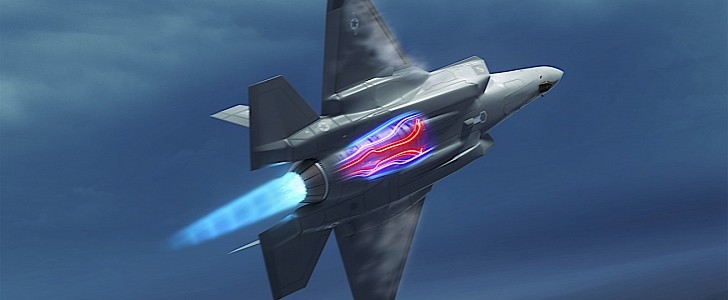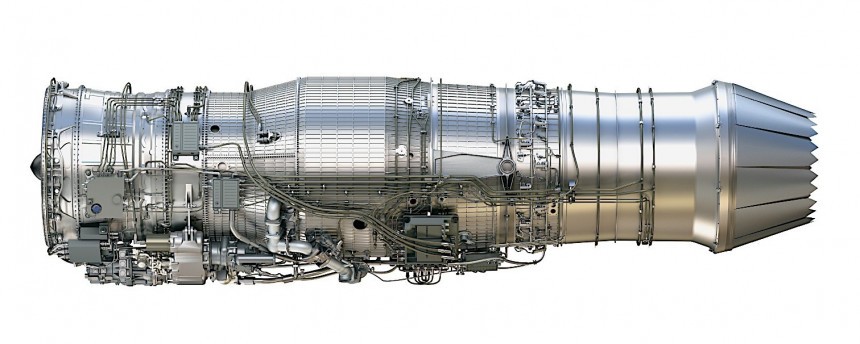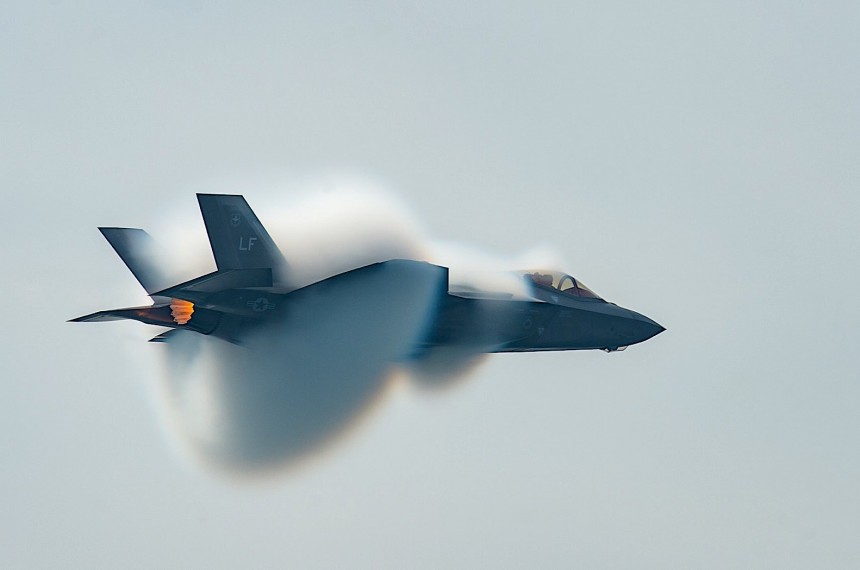The Lockheed Martin F-35 Lightning II is one of the few fifth-generation military aircraft currently in operation. Compared with all the others still flying in the world, it’s a true junior, having been born just 16 years ago. Yet, in the fast-evolving world of today, it’s already in need of some upgrades.
The F-35 is currently flying in the skies of the world in three variants, and they’re even younger than 16 years, as 2006 is the year of the platform’s first flight. The U.S. Marine Corps got its version first (the F-35B in 2015), then the U.S. Air Force (F-35A in 2016), and finally the U.S. Navy (F-35C in 2019). In between, countless allied nations started deploying their own versions.
The current-spec F-35 is powered by a single Pratt & Whitney afterburning turbofan engine which generates about 43,000 pounds of thrust (F-35A). The engine is potent enough to push the plane to a top speed of Mach 1.6 (1,228 mph/1,976 kph).
Depending on configuration, loadout, and a lot of other factors, fuel consumption for the plane varies greatly, but according to some could reach as much as 5,600 liters (1,481 gallons) per hour.
That being said, America’s top military brass decided there was need for a new F-35 engine to be developed. One that could be more powerful, last for longer and, above all, provide better fuel economy.
Enter the XA100 Adaptive Cycle Engine, a piece of technology in the process of being made in the labs of General Electric (GE). It’s a piece of hardware described as capable of giving the F-35 revolutionary capabilities (next-gen combat propulsion, they say), and more importantly, it’ll probably make its way into the world’s first sixth-generation fighter aircraft, the so far-called Next Generation Air Dominance (NGAD).
Meant for the F-35A and F-35C and capable of fitting them without structural modifications, the engine was first fired up in December 2020 as the “world’s first flight-weight, three-stream adaptive cycle engine." Most recently (to the time of writing), the second prototype completed testing procedures inside the Air Force’s Arnold Engineering Development Complex (AEDC), reaching “the final major contract milestone” in the Adaptive Engine Transition Program (AETP) under which it is being developed.
What adaptive cycle means in this case is that the engine can work in either high-thrust mode, providing the pilot with the maximum amount of power when they need it the most, or in high-efficiency mode, when full power is not needed and fuel savings can be reached.
Speaking of full power, in the case of the XA100 tests have shown it could be 10 percent more powerful than current engines, reaching 45,000 lbf. The difference may not seem all that great on paper, but it’ll probably make all the difference in the world during dangerous missions, as it also translates into 20 percent more acceleration.
When choosing to save fuel, the engine should be 25 percent more fuel efficient, and that’s a big gain regardless how you look at it. It means the F-35 could need 1,400 liters (370 gallons) less each hour, if we take the estimates made above as a reference point.
Saving fuel also translates into an increased range, which in this case is 30 percent more (F-35A with the current engine can cover 1,350 miles/2,172 km with internal fuel), but also twice as effective thermal management, as the hardware comes with an extra source of cooled air, but also with 3D-printed heat exchangers. All in all, the engine can withstand 500 degrees Fahrenheit (260 degrees Celsius) more heat than the current design.
More importantly, the XA100 has been designed in such a way that if the American military ever decides to feed its planes biofuels, it could run on those just as well.
At the time of writing, the XA100 adaptive cycle engine for the F-35 is still in testing stages. GE is now getting ready to transition to an engineering and manufacturing stage, but more prototypes will still have to be made and tested.
Estimates are the first one should take its rightful place inside an aircraft and be flown by the end of the decade.
The current-spec F-35 is powered by a single Pratt & Whitney afterburning turbofan engine which generates about 43,000 pounds of thrust (F-35A). The engine is potent enough to push the plane to a top speed of Mach 1.6 (1,228 mph/1,976 kph).
Depending on configuration, loadout, and a lot of other factors, fuel consumption for the plane varies greatly, but according to some could reach as much as 5,600 liters (1,481 gallons) per hour.
That being said, America’s top military brass decided there was need for a new F-35 engine to be developed. One that could be more powerful, last for longer and, above all, provide better fuel economy.
Meant for the F-35A and F-35C and capable of fitting them without structural modifications, the engine was first fired up in December 2020 as the “world’s first flight-weight, three-stream adaptive cycle engine." Most recently (to the time of writing), the second prototype completed testing procedures inside the Air Force’s Arnold Engineering Development Complex (AEDC), reaching “the final major contract milestone” in the Adaptive Engine Transition Program (AETP) under which it is being developed.
What adaptive cycle means in this case is that the engine can work in either high-thrust mode, providing the pilot with the maximum amount of power when they need it the most, or in high-efficiency mode, when full power is not needed and fuel savings can be reached.
Speaking of full power, in the case of the XA100 tests have shown it could be 10 percent more powerful than current engines, reaching 45,000 lbf. The difference may not seem all that great on paper, but it’ll probably make all the difference in the world during dangerous missions, as it also translates into 20 percent more acceleration.
Saving fuel also translates into an increased range, which in this case is 30 percent more (F-35A with the current engine can cover 1,350 miles/2,172 km with internal fuel), but also twice as effective thermal management, as the hardware comes with an extra source of cooled air, but also with 3D-printed heat exchangers. All in all, the engine can withstand 500 degrees Fahrenheit (260 degrees Celsius) more heat than the current design.
More importantly, the XA100 has been designed in such a way that if the American military ever decides to feed its planes biofuels, it could run on those just as well.
At the time of writing, the XA100 adaptive cycle engine for the F-35 is still in testing stages. GE is now getting ready to transition to an engineering and manufacturing stage, but more prototypes will still have to be made and tested.
Estimates are the first one should take its rightful place inside an aircraft and be flown by the end of the decade.































